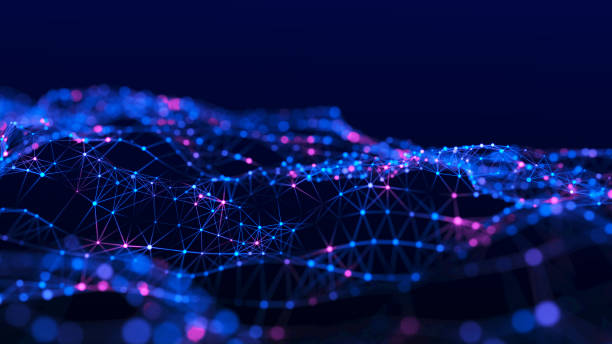In the ever-evolving landscape of data management, the rise of graph databases marks a significant shift in how organizations model, store, and analyze their information. Traditional databases have served businesses for decades, efficiently managing structured data within well-defined tables. However, as the world grows increasingly interconnected—socially, digitally, and economically—the relationships between data points have become just as important as the data itself. This realization has fueled the growing adoption of graph databases, a technology uniquely designed to capture and explore complex relationships.
Graph databases represent a paradigm shift in data representation and processing. Rather than organizing data in rows and columns or hierarchical structures, graph databases use nodes, edges, and properties to map relationships in a way that mirrors real-world networks. Whether analyzing social media connections, detecting financial fraud, recommending products, or optimizing logistics, graph databases provide unparalleled agility and insight into how entities relate to one another.
The growing traction of graph databases is not merely a technological fad—it is a response to real business needs and data complexities that conventional systems struggle to handle efficiently. To understand why graph databases are gaining momentum, it is essential to explore their structure, capabilities, advantages, and the unique role they play in today’s data-driven ecosystem.
Understanding the Fundamentals of Graph Databases
A graph database is a type of NoSQL database designed to store and query data modeled as a graph. At its core, it consists of nodes, edges, and properties. Nodes represent entities such as people, products, or locations. Edges define the relationships or connections between these entities, such as “friend of,” “purchased,” or “located in.” Properties store additional information about both nodes and edges, allowing for richer context.
This structure is inspired by graph theory, a field of mathematics concerned with the study of networks. By leveraging graph theory principles, graph databases can represent highly connected data intuitively and efficiently. Unlike relational databases, which require complex join operations to connect data across multiple tables, graph databases can traverse relationships directly. This makes them ideal for queries that depend on connections and patterns, such as “find all customers within two degrees of influence of a specific person” or “detect a chain of fraudulent transactions across multiple accounts.”
The underlying data model in graph databases reflects the interconnected nature of modern information systems. Every data point is part of a larger web of relationships, and understanding those relationships can unlock powerful insights. Whether in cybersecurity, recommendation systems, supply chain management, or knowledge graphs, the ability to model and query relationships natively is a defining feature that sets graph databases apart.
The Limitations of Traditional Databases
To appreciate the advantages of graph databases, it is crucial to recognize the limitations of traditional database systems. Relational databases, long considered the backbone of data management, organize information into tables with rows and columns. This model works exceptionally well for structured, predictable data and for applications that rely heavily on transactions and data consistency.
However, as data grows more complex and interconnected, the relational model begins to falter. Establishing and querying relationships across multiple tables requires extensive use of joins, which become computationally expensive as datasets grow. Queries that traverse multiple relationships can quickly degrade performance, making it difficult to perform real-time analysis on large, connected data.
Moreover, relational databases are schema-dependent, meaning the structure of the data must be predefined. This rigidity limits their ability to adapt to changing or semi-structured data. In an era where data originates from diverse sources—social networks, IoT devices, web interactions, and unstructured text—such inflexibility can hinder innovation.
NoSQL databases emerged as an alternative, offering more flexibility in data modeling and scaling. However, not all NoSQL databases handle relationships efficiently. Document stores, key-value stores, and column-family databases are excellent for certain use cases but are not optimized for data where relationships are central. Graph databases fill this gap by making relationships first-class citizens in the data model.
The Architecture of Graph Databases
Graph databases operate using specialized architectures designed to efficiently store and query interconnected data. At the heart of this architecture are graph storage and graph processing engines. The storage layer is optimized to represent nodes and edges directly, allowing the database to traverse relationships without expensive join operations.
The processing engine, often built with in-memory computing techniques, enables high-performance graph traversal. This allows queries to explore deep relationships quickly, such as finding the shortest path between two nodes or discovering all connected components in a network. Graph query languages such as Cypher (used by Neo4j), Gremlin (used in Apache TinkerPop), and GSQL (used in TigerGraph) provide intuitive ways to express these traversals and patterns.
Unlike relational databases, where performance is tightly coupled to indexing strategies, graph databases achieve efficiency through direct references between nodes. Each node maintains pointers to its adjacent nodes, enabling constant-time lookups regardless of the total size of the dataset. This architecture allows graph databases to scale horizontally and handle massive, highly connected datasets with remarkable efficiency.
Why Relationships Matter More Than Ever
Modern data ecosystems are inherently relational. Social networks, e-commerce platforms, transportation systems, and knowledge graphs all rely on understanding how entities connect and interact. In many cases, the relationships between data points provide more value than the data points themselves.
Consider social media platforms. The value of these systems lies not only in individual user profiles but also in how users connect, share, and influence one another. Similarly, in e-commerce, understanding which customers frequently buy similar products or share browsing behavior enables more accurate recommendation engines. In cybersecurity, mapping the relationships between users, devices, and transactions helps identify suspicious patterns that indicate fraud or intrusion.
Graph databases are uniquely suited to these scenarios because they treat relationships as first-class elements of the data model. This enables deeper insight into networks, hierarchies, dependencies, and communities. As data complexity increases and organizations seek to move from data collection to data understanding, the ability to map and analyze connections has become indispensable.
Performance and Scalability Advantages
One of the major reasons graph databases are gaining traction is their performance in handling complex, relationship-centric queries. Traditional databases struggle when queries involve multiple joins or recursive relationships. Each join operation adds computational overhead, and the performance deteriorates exponentially with the number of relationships.
Graph databases, in contrast, are designed for such operations. Their architecture allows for constant-time traversal between connected nodes. This means that even when analyzing deep relationship chains—such as tracing an infection path in epidemiology or a money-laundering trail in financial networks—graph databases can deliver near real-time results.
Scalability is another critical factor. Modern graph databases can handle billions of nodes and relationships across distributed environments. Advanced graph engines like TigerGraph, Neo4j Aura, and Amazon Neptune utilize partitioning and parallel computation to scale horizontally while maintaining query performance. This makes them suitable for enterprise-grade applications that demand both speed and flexibility.
The Rise of Knowledge Graphs and Semantic Understanding
One of the most influential drivers behind the popularity of graph databases is the rise of knowledge graphs. A knowledge graph represents a network of interconnected entities, enriched with semantic meaning. It captures not just data but also the relationships and contexts that make the data meaningful.
Tech giants like Google, Microsoft, and Facebook have popularized the concept through applications that enhance search, personalization, and artificial intelligence. Google’s Knowledge Graph, for instance, powers semantic search by connecting facts about people, places, and things. When a user searches for a historical figure, the system retrieves not just keywords but also related entities, dates, and concepts.
Graph databases are the backbone of such systems because they enable flexible, semantic modeling. They allow data to evolve naturally as new relationships are discovered. In the realm of artificial intelligence, graph databases also serve as structured repositories that feed machine learning models with context-rich data. By integrating reasoning capabilities with graph storage, organizations can build systems that “understand” data relationships in a human-like manner.
Graph Databases and Artificial Intelligence
The intersection of graph databases and artificial intelligence represents one of the most exciting frontiers in data science. AI systems rely heavily on data quality, structure, and contextual understanding. Graph databases enhance all three by providing a natural way to represent relationships that machine learning models can leverage for improved accuracy and explainability.
In machine learning, feature engineering is often the most labor-intensive step. Graphs simplify this process by exposing inherent relationships as features. For example, in recommendation systems, the connections between users, items, and interactions can directly inform collaborative filtering models. In fraud detection, graph-based AI models can identify subtle patterns of collusion by analyzing network topology.
Moreover, graph neural networks (GNNs), a recent development in deep learning, combine the representational power of graphs with neural computation. GNNs can learn embeddings that capture structural information from graphs, enabling advanced tasks such as entity classification, link prediction, and community detection. As GNN research advances, graph databases are becoming critical infrastructure for storing and managing the large-scale graph data needed to train such models.
Real-World Applications Across Industries
The versatility of graph databases is reflected in their wide range of applications across industries. In finance, graph databases are used for fraud detection, customer segmentation, and network risk analysis. Banks and fintech companies utilize graph analytics to uncover hidden relationships among accounts, transactions, and customers that may indicate fraudulent activity.
In healthcare, graph databases help model biological systems, patient histories, and medical research data. By representing diseases, symptoms, genes, and treatments as interconnected entities, researchers can uncover new therapeutic pathways and predict disease progression. Pharmaceutical companies employ graph technology to accelerate drug discovery by mapping molecular interactions.
The telecommunications industry uses graph databases to manage network topologies, detect anomalies, and optimize routing. E-commerce platforms rely on them to power recommendation engines that understand not just what customers buy but how preferences propagate through social and behavioral networks.
In logistics and transportation, graph databases optimize routing and supply chains by modeling networks of suppliers, warehouses, and delivery routes. Government agencies use them to track criminal networks and prevent money laundering, while cybersecurity firms apply them to detect attack patterns in complex IT infrastructures.
The Evolution of Query Languages
Just as SQL revolutionized relational databases, graph query languages have become central to the usability of graph databases. Cypher, developed by Neo4j, is one of the most widely adopted. It allows users to express complex queries intuitively using a pattern-matching syntax that visually resembles the structure of the graph.
For example, finding all friends of a person in a social network can be expressed in Cypher as a simple pattern traversal. This contrasts sharply with the multi-table joins required in SQL. Other query languages such as Gremlin, GSQL, and SPARQL (for RDF graphs) provide similar expressive power for different graph models and use cases.
The standardization of graph query languages, particularly through initiatives like the openCypher project and the ISO Graph Query Language (GQL) effort, is further accelerating adoption. As interoperability improves, organizations can more easily integrate graph databases into their existing data ecosystems without vendor lock-in.
Graph Databases in the Cloud Era
The shift toward cloud computing has further propelled the adoption of graph databases. Cloud-based graph database services such as Neo4j Aura, Amazon Neptune, Microsoft Azure Cosmos DB, and Google Cloud’s Graph offerings provide scalable, managed environments that simplify deployment and maintenance.
Cloud-native graph databases enable organizations to focus on innovation rather than infrastructure. They support elastic scaling, automated backups, and distributed query execution. Moreover, they integrate seamlessly with other cloud services, including analytics, AI, and data pipelines, creating a unified ecosystem for data-driven decision-making.
As hybrid and multi-cloud strategies become more prevalent, graph databases’ flexibility in integrating disparate data sources is particularly valuable. They can act as connective tissue between systems, bridging siloed datasets into coherent, relational knowledge networks accessible across platforms.
Challenges and Considerations
Despite their advantages, graph databases are not without challenges. One of the main hurdles is the learning curve associated with adopting a new data model and query paradigm. Developers and data engineers familiar with SQL must adapt to graph thinking, which requires conceptualizing data as interconnected entities rather than tabular records.
Another challenge lies in scaling extremely large graphs. While modern graph databases support distributed processing, maintaining high performance across billions of edges requires careful design and partitioning strategies. Additionally, graph databases may not always be the best choice for applications centered on simple, tabular data with minimal relationships.
Data integration can also be complex. As organizations migrate from relational to graph models, they must map existing data structures into nodes and relationships, which can involve significant transformation efforts. Moreover, while the ecosystem is maturing rapidly, standardization across graph technologies is still evolving, which may pose interoperability concerns.
Nonetheless, these challenges are being actively addressed through advancements in graph database tools, educational resources, and community collaboration. As more enterprises adopt graph technology, the best practices for data modeling, scaling, and integration are becoming well-established.
The Business Value of Graph Databases
The business case for graph databases is compelling. In a world increasingly driven by data connections, organizations that can identify and leverage those connections gain a competitive edge. Graph databases enable real-time insights into complex networks that traditional systems cannot easily uncover.
For enterprises, this translates into faster decision-making, improved personalization, enhanced fraud detection, and optimized operations. By revealing hidden patterns and relationships, graph analytics can uncover opportunities and risks that would otherwise remain invisible. The return on investment is not just technical but strategic—organizations can move from reactive analytics to proactive intelligence.
Furthermore, the agility of graph databases supports innovation. Their flexible schema allows for rapid adaptation as business requirements evolve. This is particularly valuable in sectors like technology, finance, and healthcare, where change is constant and data structures evolve quickly.
The Future of Graph Databases
As the volume, variety, and velocity of data continue to increase, graph databases are poised to become central to modern data architecture. Their ability to model and analyze relationships naturally aligns with emerging trends in artificial intelligence, data integration, and knowledge management.
The future will likely see tighter integration between graph databases and machine learning systems, enabling continuous learning from connected data. Advances in quantum computing and probabilistic graph models may further extend the analytical power of graphs, allowing even more sophisticated reasoning over uncertainty and complexity.
Graph databases will also play a crucial role in the Semantic Web and Web 3.0 initiatives, which aim to create a web of data that machines can interpret intelligently. By providing the structural foundation for interconnected knowledge, graph databases will be key to realizing a truly intelligent, context-aware digital ecosystem.
As industries embrace data-driven transformation, the adoption of graph databases will accelerate. What began as a niche technology for specialized use cases has matured into a mainstream solution for some of the most pressing challenges in data science and analytics.
Conclusion
Graph databases are redefining how we think about data. In a world where relationships matter more than isolated facts, they offer a powerful and natural way to represent, query, and understand complex systems. Their architecture, grounded in graph theory, enables lightning-fast traversal and analysis of deeply connected data that traditional databases cannot handle efficiently.
From powering recommendation systems and fraud detection to fueling AI and knowledge graphs, graph databases have proven their value across diverse industries. They are not merely a new kind of database—they are a new way of thinking about data itself.
As organizations continue to grapple with ever-growing data complexity, graph databases will stand at the forefront of innovation, enabling deeper insight, greater connectivity, and a richer understanding of the digital world. Their growing traction is not just a technological trend—it is a fundamental shift toward a more connected, intelligent, and relational era of data management.






